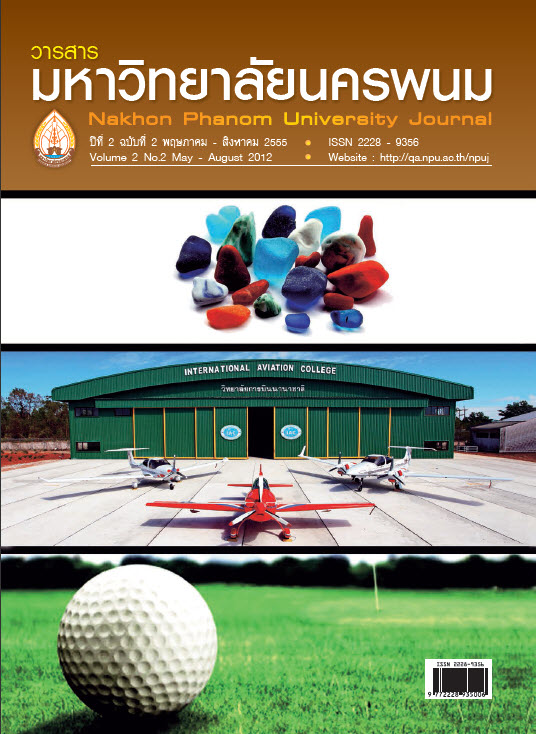The Strategic Competence in Communication: A Case Study of The Thai Wives of Foreigners in Nong Bua Lam Phu Province
Main Article Content
Abstract
วัตถุประสงค์ของการวิจัย เพื่อศึกษาความสามารถในการใช้กลยุทธ์การสื่อสารของภรรยาชาวต่างชาติในจังหวัดหนองบัวลำภู กลุ่มตัวอย่างผู้ให้ข้อมูลเป็นหญิงไทยที่เป็นภรรยาชาวต่างชาติในจังหวัดหนองบัวลำภู จำนวน 8 คน ใช้วิธีสุ่มตัวอย่างแบบสโนว์บอล เก็บรวบรวมข้อมูลโดยการสัมภาษณ์เชิงลึกแบบไม่มีโครงสร้าง การสังเกต และการบันทึกภาคสนาม ผู้วิจัยสัมภาษณ์เป็นภาษาไทยและ ภาษาอังกฤษ และวิเคราะห์ตามวิธีวิทยาของการสร้างทฤษฎีฐานราก ผู้วิจัยได้นำเสนอกระบวนการของการใช้กลยุทธ์การสื่อสารของผู้ให้ข้อมูล และกรอบทฤษฎีของกลยุทธ์การสื่อสาร ผลการวิจัยพบว่า กลยุทธ์การสื่อสารที่ผู้ให้ข้อมูลใช้เพื่อบรรลุเป้าหมายในการสื่อสาร ประกอบด้วย 1) การเปิดพจนานุกรม 2) การเรียนในชั้นเรียน 3) การพูดคุยโทรศัพท์ 4) การเรียนด้วยตนเอง 5) การถามคำถามและการจดจำ 6) การพูดตามและการเลียนแบบ 7) การใช้ภาษาท่าทาง 8) การจดบันทึก 9) ความกล้า 10) การฟังโดยใช้จิตใต้สำนึก 11) การพูดคุยออนไลน์ 12) การเขียน และ 13) การวาดภาพ ซึ่งนำมาวิเคราะห์ข้อมูลโดยการจัดหมวดหมู่ได้ 5 ลักษณะหลัก ได้แก่ 1) แรงจูงใจ 2) ความเต็มใจที่จะสื่อสาร 3) การได้สัมผัสกับภาษาเป้าหมาย 4) การถามคำถามและการจดจำ และ 5) การใช้กลวิธีการสื่อสาร ผู้วิจัยได้ค้นพบว่าแรงจูงใจเป็น องค์ประกอบหลักที่ร้อยรวมทั้งห้าลักษณะเข้าด้วยกัน
The purpose of this case study was to investigate the strategic competence in communication of the Thai wives of foreigners in Nong Bua Lam Phu province. The informants were eight Thai wives of foreigners in Nong Bua Lam Phu province chosen by snowball technique. Data were collected through in-depth unstructured interviews, observations and field notes. The interviews were conducted in Thai and English and analyzed according to grounded theory methodology. The process of the strategies utilized by the informants and theoretical framework of strategic competence in communication were proposed. The findings revealed the strategic competence in communication employed by the informants to achieve their communicative goals, ranging from: 1) using dictionary, 2) attending classes, 3) telephoning, 4) self-directed learning, 5) asking questions and memorization, 6) repetition and imitation, 7) mime and gestures, 8) note-taking, 9) risk-taking, 10) subconscious listening, 11) chatting online, 12) writing and 13) drawing. These categories were analyzed and related into 5 main aspects, namely: 1) motivation, 2) willingness to communicate, 3) exposure to the target language, 4) asking questions and memorization, and 5) employing communication strategies. It was discovered that motivation was the core component that tied the entire five aspects together.


